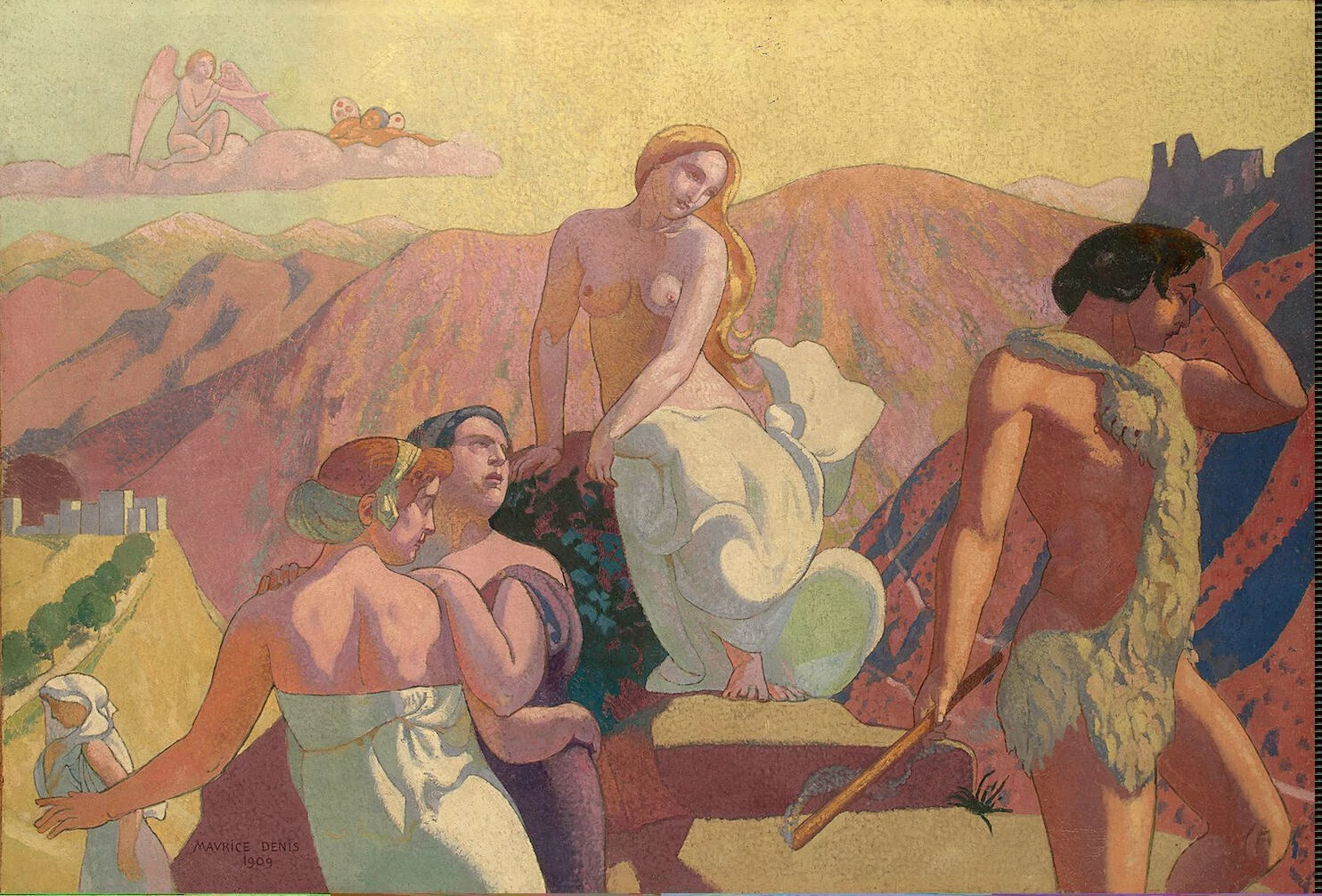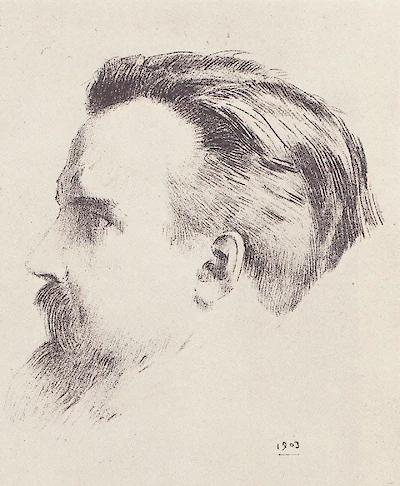

Maurice Denis
Art as prophesy
1870 – 1943What a pitfall the practice of Antiquity can be. — It is an art that is too rich, too perfect, too general, of bygone idealism, and for which the conventions have become nearly incomprehensible, although they remain very apparent. Antiquity pushed the modern artists towards conventions, or nature, but not character. Nevertheless, the first Renaissance showed a rather rich inititiative of keeping from Antiquity only the processes, methods, and beautiful forms. Dangerous also for Antiquity to be studied, as inevitable as it is, through the widespread use of Roman copies rather than based on the originals. Like the Renaissance would be studied from Domenichino or Bernini.
I did not remember the whole aspect of the lower church: stained glass windows, tombs, architecture, ornaments, decorative paintings. It is very beautiful. The Giottos on the vault are a gem that remind you of Raphael: the same color, more refined architecture, the same style! In the Triumph of Chastity, blue, green, pink and, sign of a great talent, the superiority of the very colorful whites, like in Raphael’s. Cimabue’s remains also carry enormous style.
La Verna. There are many similarities between the art of Fra Angelico and that of Piero della Francesca: firm contours, without the excess of details of the Lippi-Ghirlandaio school. There is also the vast, raphaelesque simplicity of Masaccio and of Masolino at the Carmine [church]. But in Masaccio, there is the chiaroscuro. The followers of Giotto rounded the figures evenly, they did not shape their draperies. But many painters of the XVth century went to the opposite extreme. Piero della Francesca’s clumsiness and lack of imagination: each character is a model that has been copied and who naturally shows grandeur…but in this battle of the King of Persia, it appears cold. How strange to conceive such a scene of battle! His officers’ triumphant chariots, next to real details, look so unreal that they displease the mind; the nearby chest shows more ancient treasures in which the construction is less clumsy.
I left Rome after a random visit to Rospigliosi. In front of Domenichino’s Adam and Eve, there are fragments (animals) by the Primitives; they spoke of boredom to me, a smell of death and mildew. This tall effort, is that beyond our strength? Remember the red rose or peony near the plump Eve. The Saul is boring, but catches the attention, he has distinctive characteristics. Near all of that, Poussin’s small Amour seems light and witty, like a Watteau. This shows, I think, the quality in execution. In Domenichino, as in Marval, you feel the concern to be classic by utilizing elements of paint only, pure from all literary expression, no tricks, good quality, where you feel the will, more than the worker’s hand. They shun improvisation. Left Rome deeply moved.